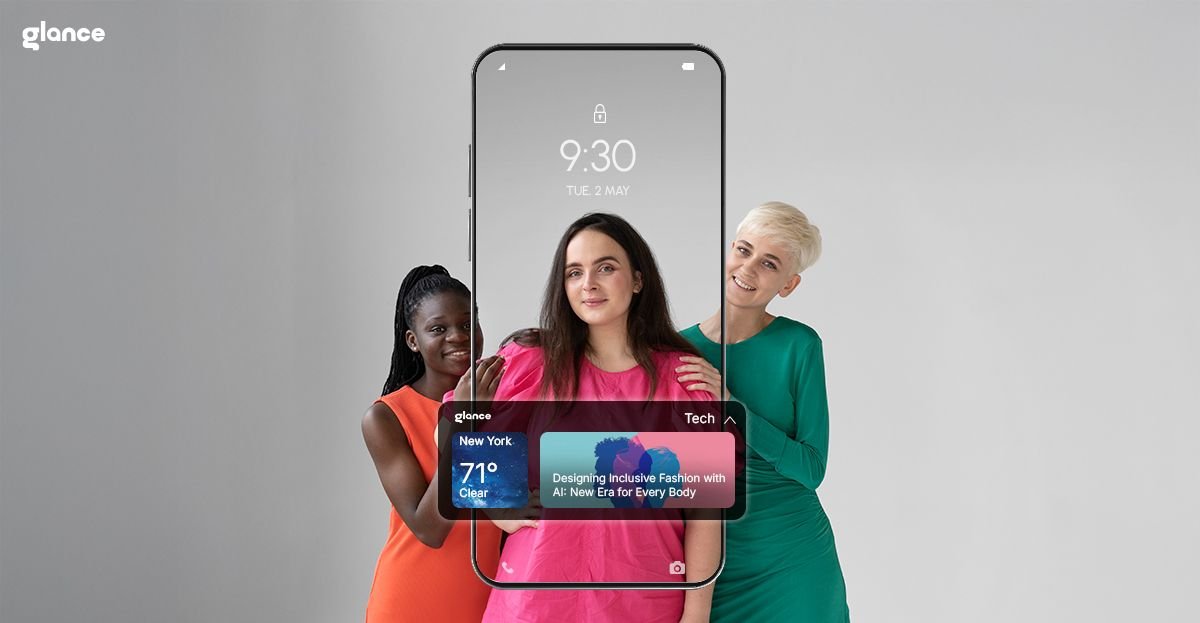In a digital landscape shaped by algorithms and aesthetics, inclusion often becomes an afterthought. But for Glance AI, it’s the starting point. As AI reshapes how we shop, it’s critical that the experiences it powers reflect the diversity of the people it serves. Welcome to the world of inclusive AI shopping, where every skin tone, body type, gender identity, and style sensibility is recognized, celebrated, and shown.
Why Inclusion in Shopping Interfaces Matters
E-commerce has historically catered to a narrow definition of beauty and usability. Most platforms display default models with singular body types and limited representation, sending subtle signals about who fashion is “for.”
The result? A significant portion of shoppers—especially people of color, plus-sized individuals, gender non-conforming users, and those with disabilities—feel unseen or excluded.
This isn’t just a social issue. It’s a performance issue. When shoppers don’t see themselves, they bounce. When they do, they buy.
The Rise of Inclusive AI Shopping
Inclusive AI shopping is the application of intelligent personalization systems that adapt content and interfaces to a user’s identity, behavior, and preferences in real time.
It’s not just about representation. It’s about adaptation. It means:
- Showing visuals that reflect your skin tone and body shape
- Styling recommendations that align with cultural cues
- UX flows that accommodate cognitive and physical diversity
And it’s exactly what Glance AI is building.
How Glance AI Embeds Inclusion Into Every Layer
Glance AI’s personalization engine doesn’t just learn your style—it learns you. Here’s how inclusion is baked into its architecture:
1. AI Twin: Personalized, Evolving, Equitable
Your AI Twin reflects your aesthetic, mood, scrolling pattern, and engagement history. It also tunes itself to your tone, proportions, and style preferences—ensuring that you’re not only represented but understood.
2. HyperReal Styling
Traditional e-commerce shows one look, one model, one body type. Glance AI uses visual re-synthesis technology to render outfits in a way that matches the user’s shape, skin tone, and visual identity—without using avatars.
3. Context-Aware Discovery
Inclusivity isn’t static. A Black woman shopping for workwear in Atlanta on a Tuesday evening has different needs than a Gen Z user browsing streetwear in LA on a Sunday morning. Glance AI reads behavioral and environmental signals to surface culturally relevant, situationally appropriate options.
4. Device-Agnostic Accessibility
Glance’s visual cards respond to different scrolling behaviors, hand orientation (left-handed users), and device types—reducing exclusion from micro-friction in UX.
Representation = Conversion
Inclusivity is beautiful—but it’s also practical. When shoppers feel emotionally aligned with what they’re shown, their:
- Dwell time increases
- Carting behavior improves
- Return rates drop
- Brand recall strengthens
Inclusion isn’t a checkbox. It’s a business driver.
Building for Intersectionality
Glance AI recognizes that users don’t exist in singular categories. Someone can be plus-sized, non-binary, and shopping from a rural location—all at once.
Its systems are designed to accommodate overlapping identities with nuance, creating visual experiences that feel uniquely resonant to each user—because they are.
Inclusive AI Shopping = Future-Proof Strategy
As Gen Z and Gen Alpha become primary fashion consumers, inclusivity is no longer optional. These users expect:
- Cultural fluency
- Visual diversity
- Real-time responsiveness
Glance AI is already positioned to lead this shift, offering:
- Inclusive by design architecture
- No search, no scroll interface for accessibility
- Behaviorally adaptive visuals
Conclusion: Shopping That Reflects You
Inclusion is not a feature. It’s a foundation. And Glance AI is proving that personalized shopping can—and must—be inclusive by default.
Because when people see themselves in the experience, they show up—and they stay.
Want to shop in a space designed with you in mind?Explore Glance AI’s inclusive visual experience and see the difference.



